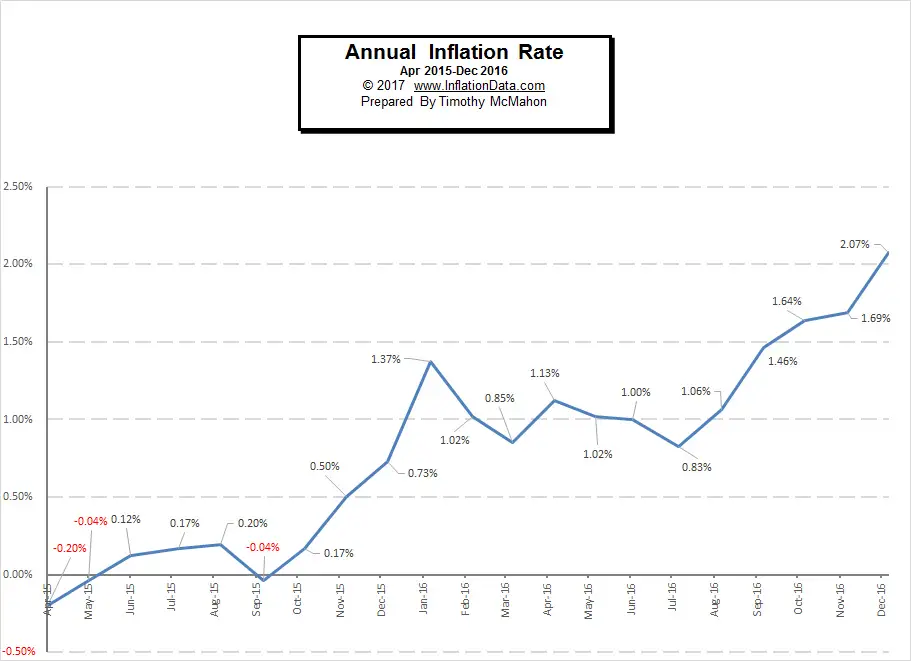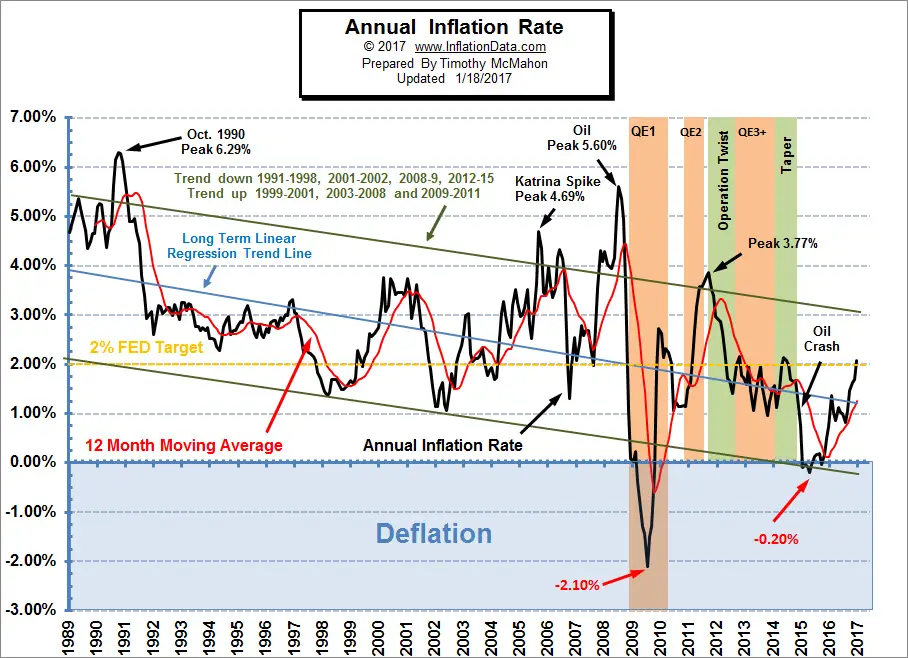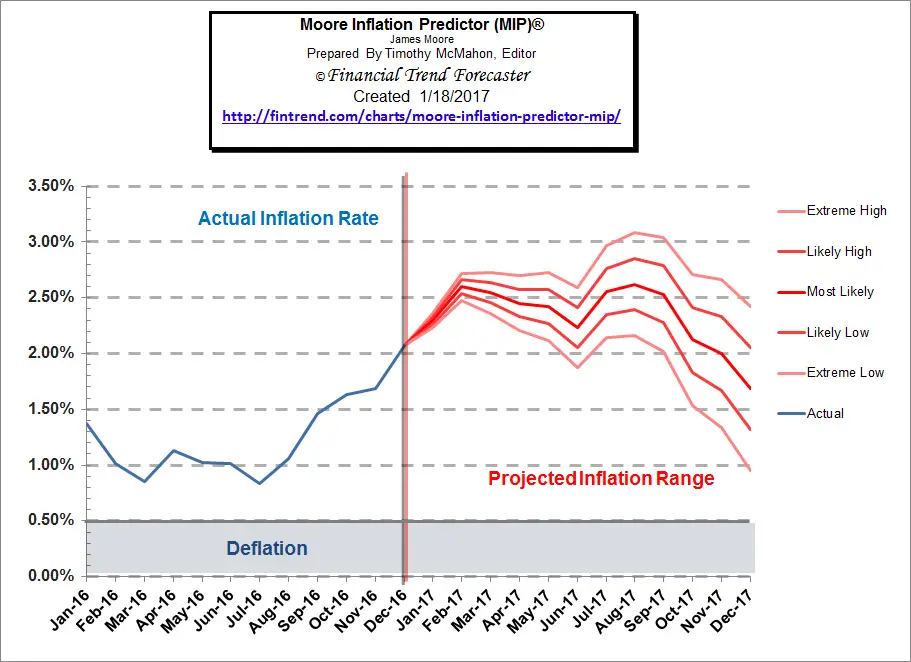For quite some time, I’ve been saying, that “annual inflation throughout 2016 would remain well below the official FED target of 2% but we are getting closer and it is possible that December could tip the scale above 2%.” And that is exactly what happened… annual inflation finished the year at 2.07%!
The Bureau of Labor Statistics (BLS) released the data for the month of December on January 18th. They also adjusted four months of data from May through August 2016 due to some faulty data relating to Prescription drug prices but it had no visible effect on the published inflation rates and was only visible if you extended the calculation out to 3 decimal places.
Annual Inflation September 2015 – December 2016
Annual Inflation was negative (Deflation) back in April 2015, from there it tried to rise but then fell back negative in September. But then it only took a few months to reach 1.37% looking like it was going to quickly return to previous levels in the 3% – 5% range. But in spite of the FED setting a target of 2% the inflation rate hovered between 8/10 ths of 1% and just over 1% for the next 7 months. This was primarily due to a collapse in oil prices. Oil went from $38.41 in September 2015 to $39.40 in October but then it began falling reaching $23.58 in February. From there it rebounded to $41.69 in June before falling to $37.98 in September and then rising again to $45.19 in December. So although the correlation isn’t perfect we can see that falling oil prices had an effect on taming inflation for a while.
Long Term Inflation
From our Annual Inflation Chart we can see that the long term trend since 1989 has been down although there have been periods of counter trend rallies such as the period from 2002 through 2006 in which it would have been hard to believe that inflation was trending down. It is very possible that we have seen the bottom during the crash of 2009 and inflation will work its way upward again but first it has to decisively break through the long downward channel.
The Moore Inflation Predictor
However, if the Moore Inflation Predictor is correct and inflation drops off toward the end of 2017 inflation could remain inside the channel and the long term trend would remain intact.





My hubby and I having a discussion on “inflation” . If th cost of an auto goes up because of American wages vs Mexico, is this inflation as long as the value of USD remains the same? As in USD vs other world monies
Joy,
Good question! There are a variety of reasons that prices may increase. The primary one is an increase in the money supply. But with the current global economy another cause could be currency fluctuations. In your example, if the Mexican Peso devalues against the U.S. Dollar that would cause an increase in the cost of Mexican produced goods. The problem comes in the definition of Inflation since the word is used sloppily to mean both Price Inflation and Monetary Inflation. See: What is the Real Definition of inflation?